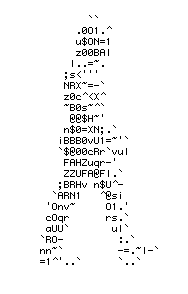Basel Social Club embarks on its third iteration in yet a new location from June 9–16, 2024. Last Tango, invited as one of the non-commercial interventions, is pleased to present the work of Oz Oderbolz.
Basel Social Club / Oz Oderbolz
- Basel Social Club Opening Hours 9 – 15 June 11:00 – 23:00 16 June 11:00 – 15:00
BSC is going fully outdoors this year, on the verge of the city, where the land is farmed to produce what we consume. It’s not a wild forest; it is land that is worked, following natural cycles, with animals living there as well. This year’s BSC edition is most definitely a nice getaway from the hustle and bustle of the enclosed fair grounds!
The works by Oz Oderbolz resonate with the surroundings, fittingly related to farming and countryside aesthetics, the politics of labour, building upon the imaginations of what constitutes contemporary rural life and how it can be queerly re-imagined. Two works by Oz Oderbolz will be on view: Dick Hammer (2023) and Kreiselheuer Pöttinger (typ zk44 / 6527-1321) (2023). For inquiries please contact Linda Jensen at lindajensen@lasttango.info Oderbolz is also currently featured in the exhibition Country Offside at Ausstellungsraum Klingenthal curated by Violeta Mansilla
Basel Social Club Opening Hours 9 – 15 June 11:00 – 23:00 16 June 11:00 – 15:00 In Dick Hammer (2023) we see a squirming face with bleak eyes shaped as a teardrop. Oz has been researching the iconic Marlboro man and the common reading of this figure as a masculine archetype, reserved and rugged. In their study of other male archetypes (Daddy, Hero, Farmer etc.) and their related imageries they subvert the conventional masculine constructions by subjecting the objects to failure. The saddles, worn down by wear (bodily contact, sweat, outdoor use, etc.) are in absence of a body, yet curiously strongly imply the body, and symbolically allude to making visible what’s usually unseen. Their elaborate symmetries and layered volumes made more manifest through the strapping. Oz deliberately seeks to highly aestheticize the saddle, the communication link between horse and rider, aestheticizing a vision of liberation and desire. After a process of formal abstraction and material alterations the use value of the objects embedded onto the saddle seats has been altered. Oz is interested in the potential of their signifying function becoming dysfunctional and ultimately the potential of the queer art of failure (Halberstam).
“Oz Oderbolz purchased this [Kreiselheuer Pöttinger (typ zk44 / 6527-1321)] haymaker online at a second-hand auction in August [2023] and, over the course over 14 weeks, undertook to carefully dismantle it piece by piece, clean it, strip it of its distinctive red paint, polish it and reassemble it until the machine looked like a gleaming skeleton of chromed steel. Through this painstaking performative action, Oz progressively reconfigured the appearance and meaning of this object, relieving it both of its formal signifiers related to virile fieldwork and of its functional purpose… In their practice, Oz investigates archetypical figures of masculinity and their attributes, which their artworks allow to resignify and emancipate from prescriptive binaries. With this haymaker, the artist appropriates an engine that materializes their childhood memories of growing up in the countryside and undertakes to distort its connotations by means of a meticulous protocol. The object itself can somewhat evoke a body, with its extendable arms and rotating hands. At the same time, it is a prosthetic meant to increase the performance of what a mere human body could achieve—not unlike draught animals just a few decades prior. Yet it is also no longer meant to function as a machine and as a motor of strength and efficiency. Rather, it now exists as the tangible witness of a process that gave it a new meaning and function, through which it eventually became the custodian of memories and of a certain kind of insubordination, that is, the embodiment not of performance and of productivity, but, instead, of perseverance and care.”
Extract from a text by Simon W. Marin
- Download:
- Work description










